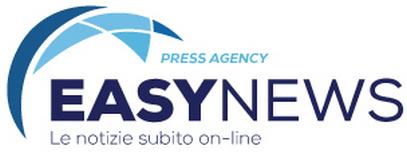Buongiorno,
inviamo di seguito il commento “BCE: mantenere la rotta fino a marzo” a cura di Frederik Ducrozet, Responsabile della ricerca macroeconomica di Pictet Wealth Management, in previsione della decisione sui tassi della BCE di giovedì 2 febbraio.
Buona giornata,
Federica
M: +39 340 7500862
BCE: mantenere la rotta fino a marzo
- Riteniamo che la BCE non abbia altra scelta se non quella di rialzare i tassi di 50 punti base giovedì, ribadendo le stesse indicazioni da “falco” di dicembre. I dati sull’attività economica sono stati più resistenti del previsto, grazie al forte calo dei prezzi del gas ma anche alla continua tenuta del settore dei servizi; mentre l’inflazione rimane troppo alta perché la BCE possa accennare a un rallentamento del ritmo di rialzo.
- Ci aspettiamo che il resoconto del meeting ribadisca l’impegno della BCE ad aumentare i tassi di policy “in modo significativo e a ritmo costante per raggiungere livelli sufficientemente restrittivi da garantire un tempestivo ritorno dell’inflazione all’obiettivo di medio termine del 2%”, coerentemente con un terzo rialzo consecutivo di 50 punti base a marzo. A questo punto, le cose si faranno più interessanti. Una lezione degli ultimi mesi è che impegnarsi su un percorso di tassi con diversi mesi di anticipo può generare inutile confusione e talvolta disaccordo tra i membri della BCE. Con l’entrata in territorio restrittivo dei tassi di riferimento, quando l’economia rallenta e le pressioni inflazionistiche iniziano ad allentarsi, tali disaccordi dovrebbero diventare più visibili.
- Crediamo che la BCE non si impegnerà più su un percorso di tassi – o sull’entità dei rialzi – oltre marzo. La presidente BCE Christine Lagarde potrebbe invece insistere sul fatto che le decisioni future dipendano maggiormente dai dati, concentrandosi sempre più sull’inflazione di fondo (che deve ancora raggiungere il picco) e sulla crescita dei salari (che probabilmente aumenterà più rapidamente nel primo semestre del 2023). I dati sull’inflazione e sui salari aiuteranno la BCE a decidere quanto dovrà essere restrittivo l’orientamento monetario, al fine di garantire un graduale ritorno dell’inflazione al target del 2%. Il nostro scenario base è che la BCE aumenti il tasso sui depositi al 3,50% a maggio, con il rischio che a un certo punto scenda a rialzi di 25 punti base.
- La BCE dovrebbe svelare ulteriori dettagli sul Quantitative Tightening (QT), anche se, probabilmente, si tratterà di una distrazione per i mercati. I dettagli sull’attuazione del QT comprenderanno le modalità con cui la BCE intende ridurre le disponibilità del programma di acquisto di asset (Asset Purchase Programme – APP) di 15 miliardi di euro al mese in un contesto di rimborsi disomogenei tra mercati, paesi e scadenze, evitando al contempo deviazioni troppo ampie dalle chiavi di capitale del medio termine. Ci aspettiamo ancora che la BCE aumenti il ritmo del QT nella seconda metà del 2023, molto probabilmente interrompendo del tutto i reinvestimenti dell’APP, ma è probabile che questo venga discusso in una fase successiva. Infine, la BCE probabilmente accoglierà con favore i rimborsi anticipati delle TLTRO, in quanto ampiamente coerenti con la strategia di normalizzazione.
ENGLISH VERSION
ECB: staying the course until March
- We think the ECB has no real choice but to hike rates by 50bps this week, and to reiterate its hawkish guidance from December. Activity data have been more resilient than expected, driven by the sharp drop in gas prices but also ongoing resilience in the services sector, while inflation remains way too high for the ECB to hint at a slower pace of tightening.
- We expect the statement to reiterate the ECB’s commitment to raise policy rates “significantly at a steady pace to reach levels that are sufficiently restrictive to ensure a timely return of inflation to the 2% medium-term target”, consistent with a third consecutive 50bps hike in March. That is when things will become more interesting. One lesson from the past few months is that committing to a rate path several months in advance can bring unnecessary confusion, and sometimes disagreement among ECB members. With policy rates entering restrictive territory as the economy slows and inflationary pressures start to ease, such disagreements should become more visible.
- We believe that the ECB will stop committing to a rate path (or to the size of rate hikes) beyond March. Instead, President Lagarde may insist on future decisions being more data dependent, with a growing focus on core inflation (which has yet to peak) and wage growth (which is likely to pick up more quickly in H1 2023). Inflation and wage data will help the ECB decide how restrictive the monetary stance needs to be eventually, in order to secure a gradual return of inflation to its 2% target. Our baseline remains for the ECB to raise the deposit rate to 3.50% in May, with a risk that they step down to 25bps rate hikes at some point.
- The ECB is also expected to unveil more details on Quantitative Tightening (QT), although this is likely to be a distraction for markets. QT implementation details will include the how the ECB intends to reduce its Asset Purchase Programme (APP) holdings by €15bn per month in the context of uneven redemptions across markets, countries and maturities, while avoid too large deviations from capital keys of the medium-term. We still expect the ECB to increase the pace of QT in H2 2023, most likely by stopping APP reinvestments altogether, but this is likely to be discussed at a later stage. Last but not least, the ECB will likely welcome the early repayments of TLTROs as broadly consistent with their normalisation strategy.

